Key Imperatives
- Offer affordable options for consumer-selected care services
- Assemble network of convenient care options
- Explore premium-priced, expanded-access primary care models
- Convert initial ambulatory visits into lasting patient relationships
Compete for share of consumer-selected outpatient volumes
The consumer-oriented ambulatory network wins share by offering price-competitive, convenient care options directly to patients. Embracing this identity, however, requires facing new competitors, especially name-brand retailers such as CVS, Walgreens, and Walmart. It also means responding to the forces of consumerism, particularly demands for affordable prices, on-demand access, and tailored services.
Download all our strategies for building a consumer-oriented ambulatory network
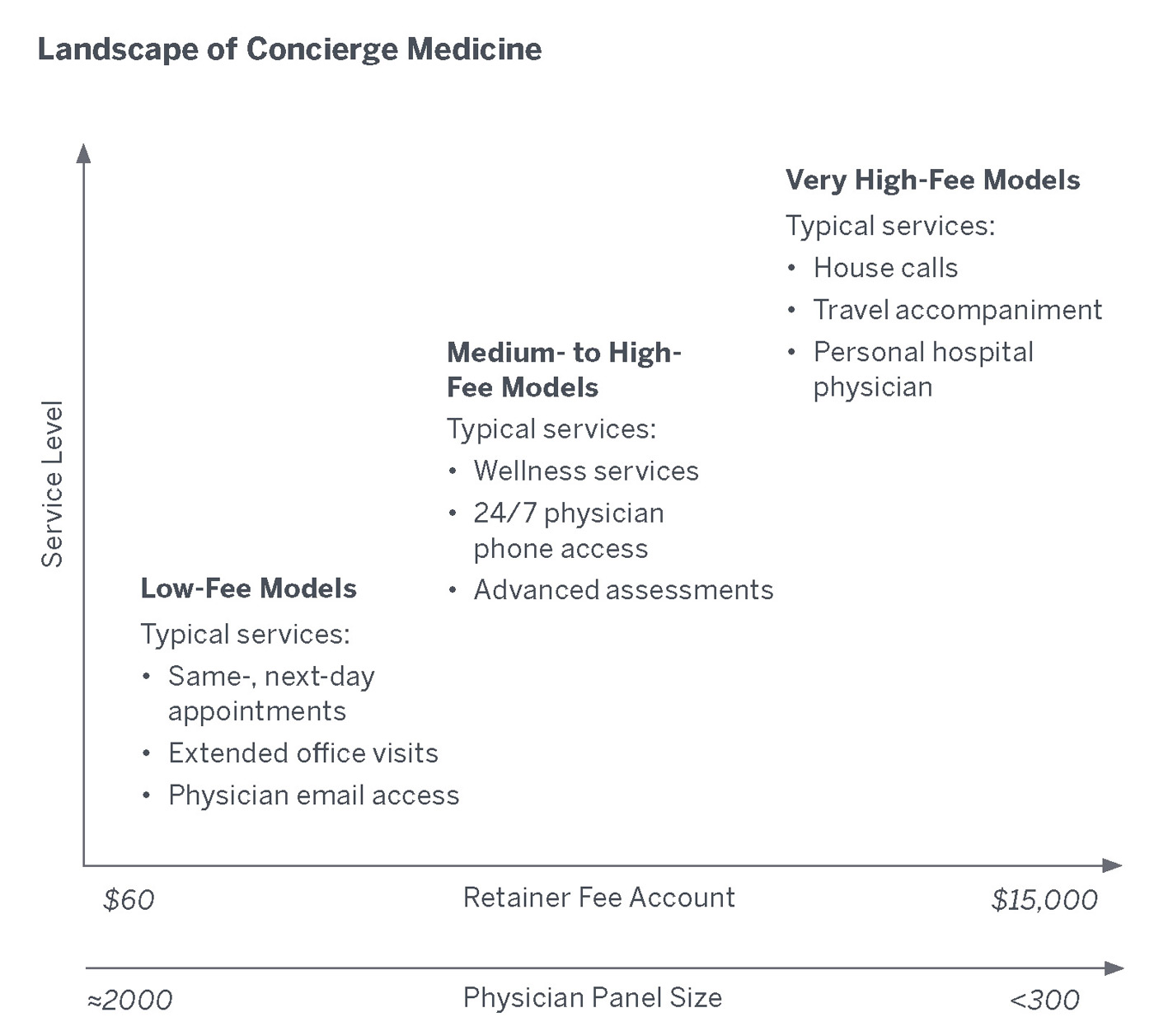
Offer a variety of convenient care options
Hospitals and health systems choosing to compete in the consumer-oriented ambulatory arena will need to dramatically expand their range of ambulatory care options. The two traditional ambulatory access points—primary care offices and emergency departments—don’t sufficiently meet consumers’ demands for affordability or convenience.
44% of retail visits occur when physician office is likely to be closed
So hospitals are investing in a range of consumer-oriented care access points, especially urgent care centers, retail clinics, and virtual visit capabilities. Unfortunately, each model comes with a set of pure play competitors. As a result, many hospitals are considering partnership with established providers in their markets.
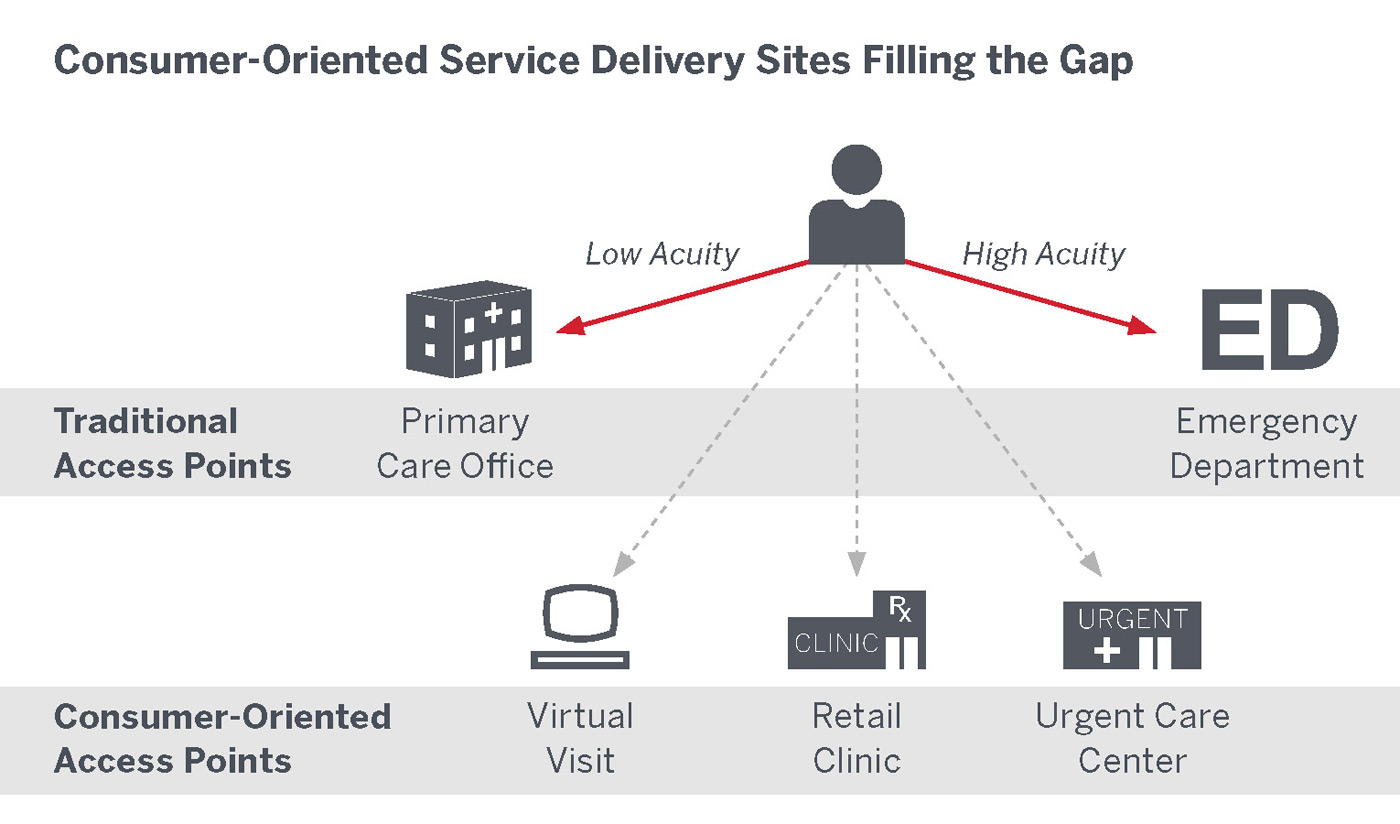
Attract price-sensitive consumers with competitive offerings
Having the right set of ambulatory services available is just the first step. Next, hospitals need to price these services attractively. Without an effective pricing strategy, price-sensitive consumers will choose a lower-priced alternative—or delay care altogether. Hospitals want their ambulatory services to appear affordable, which means they’re priced low enough to attract patients and are comparable to low-cost alternatives in the market.
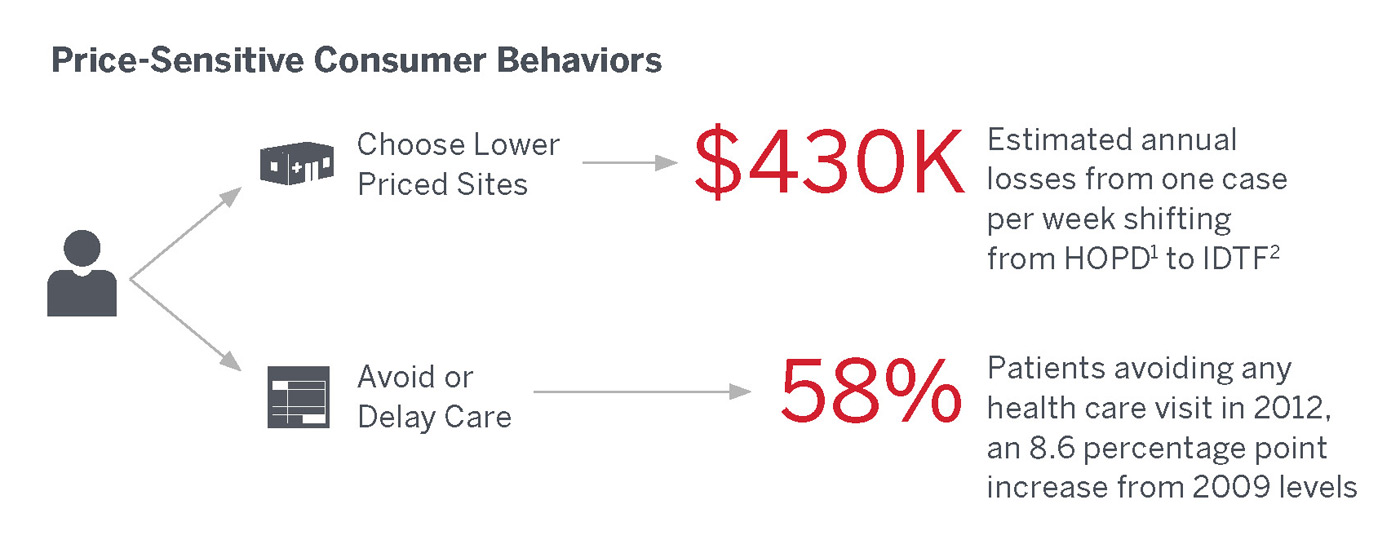
What does it mean to be 'affordable'?
1. Prices low enough to attract patients
2. Comparable to other prices in the market, particularly the lowest price
Hospitals have explored a range of models making their prices more attractive, such as implementing across-the-board price reductions and selling discount cards. But some providers are putting the pricing decision directly in patients’ hands.
For example, the CarePilot scheduling service offers steep discounts— upwards of 30%—if patients select off-peak appointment times. This makes selecting an imaging appointment similar to booking an airplane ticket.
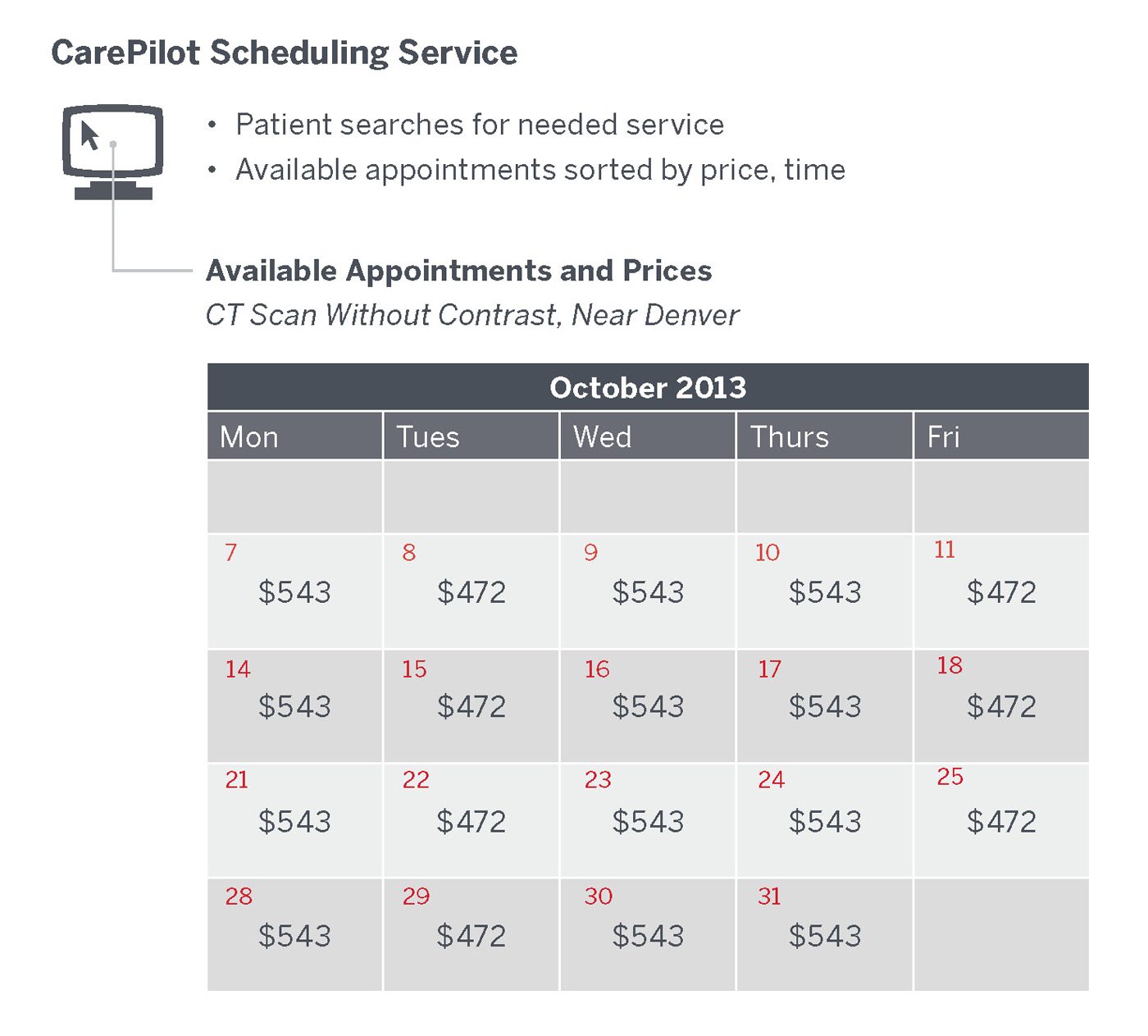
Consider premium payment models—even concierge medicine
But finding a low price isn’t always consumers’ top motivation, at least not for all ambulatory services. On-demand access is a more important consideration for many patients—and they’re even willing to pay a premium to get it. As a result, providers are exploring a range of concierge medicine models, offering different service levels at different price points. Hospitals can’t afford to cede the patients seeking premium experience to the new competitors offering improved access and service.

Convert initial ambulatory visits into lasting relationships
Finally, hospitals embracing the consumer-oriented ambulatory network identity need to capitalize on the prime advantage they have over pure-play competitors—their ability to form long-term relationships with patients. Hospitals need to develop a clear plan for connecting patients who access convenient care site visits with affiliated primary care practices.
Mercy Medical Center in Des Moines, Iowa, has developed an effective model for converting urgent care visits to standing relationships. They co-locate urgent care centers with primary care practices—and hardwire the referral protocols to ensure effective handoffs from urgent care to primary care. As a result, they’re able to increase new patient visits, decrease wait times, and improve patient satisfaction. And over time, these relationships will lead to future revenue too.
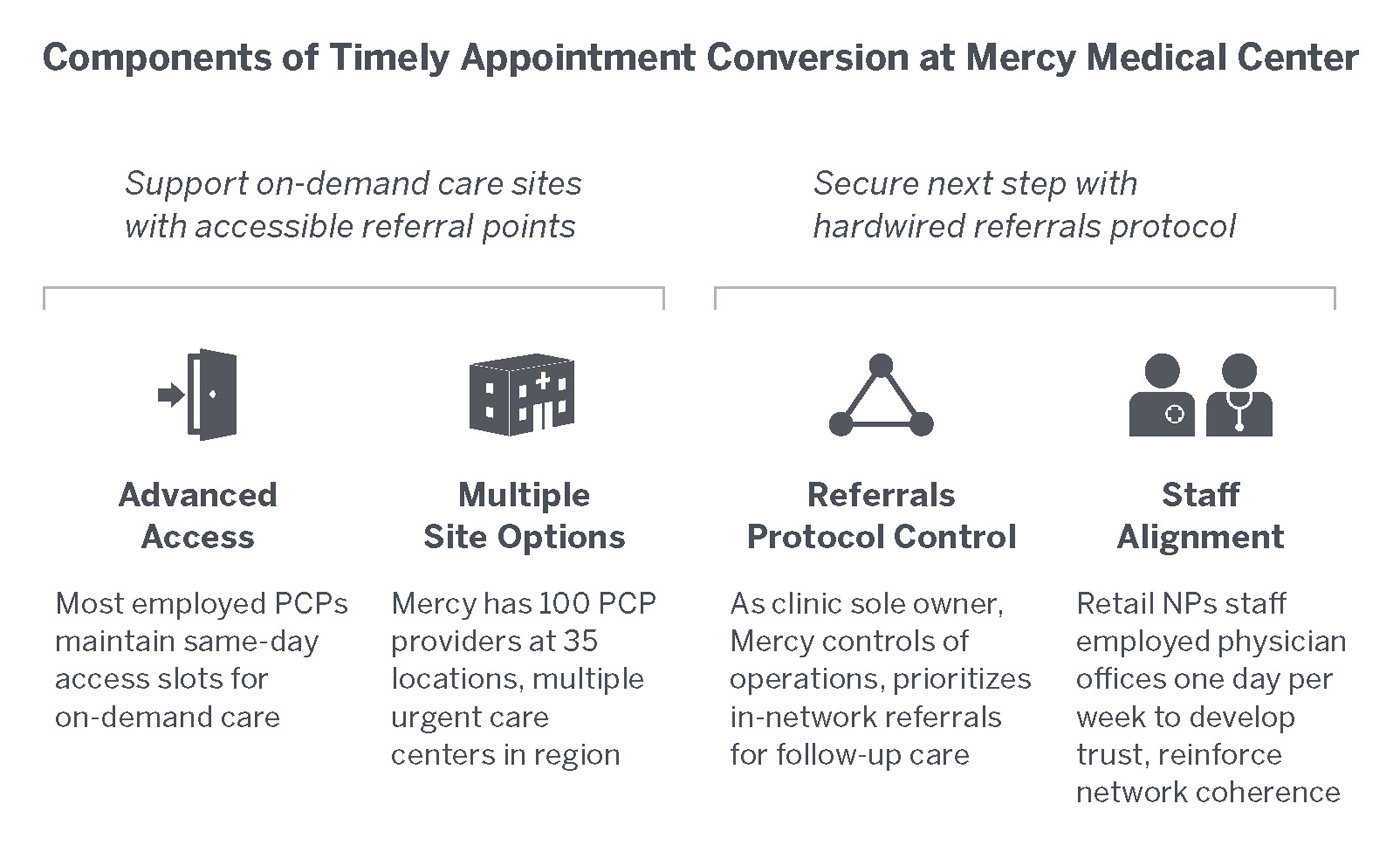
Don't miss out on the latest Advisory Board insights
Create your free account to access 2 resources each month, including the latest research and webinars.
Want access without creating an account?
You have 2 free members-only resources remaining this month remaining this month.
1 free members-only resources remaining this month
1 free members-only resources remaining this month
You've reached your limit of free monthly insights
Become a member to access all of Advisory Board's resources, events, and experts
Never miss out on the latest innovative health care content tailored to you.
Benefits include:
You've reached your limit of free monthly insights

